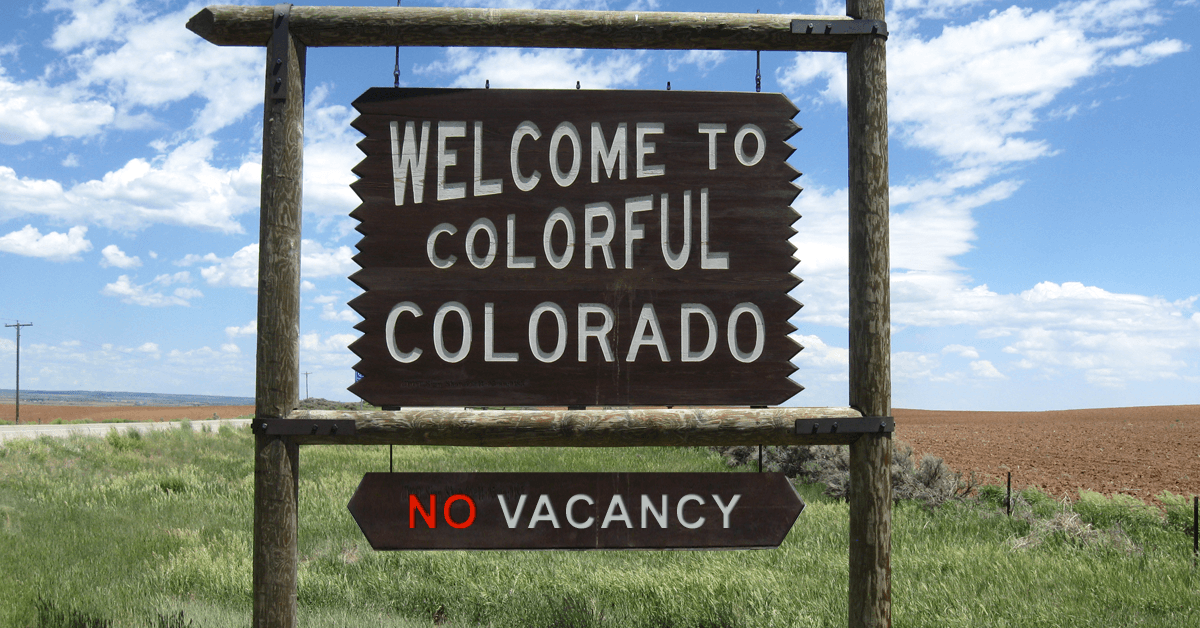I wrote not too long ago that I am adapting well to city life. I forgot about rush hour traffic, until this week. I am babysitting my daughter-in-law’s injured dog and I come and go to her apartment according to normal working hours. I drive on I-90 for about 12 miles. Last night and this morning: rush hour traffic. How could I forget? Grrrr. Few cars traveled east, which tells me that the CdA/Post Falls folks often work in Spokane. Makes sense since it is a bigger city.
I quietly grumbled at the intrusion of rush hour traffic into my low-stress life. Then I looked around me. If you have lived in Colorado Springs or Denver, you cannot truly call what I drove in a rush hour. Sure, traffic slowed a bit, but it was never bumper-to-bumper, fast-paced pandemonium. No road rage. No middle-finger salute. This was more like Denver 30 years ago. Traffic yes, but not crazy traffic.
That didn’t bring too much consolation, though, because,I began to worry: Will Spokane be like CO in 30 years? Colorado is “full” and more people are moving out. I saw this yesterday:

So, after I started worrying about a growing Spokane and rush hour traffic, I started to think about how growth will continue all across the country. In response, we must be good stewards of public lands so we have someplace to go and unwind from life in overpopulated cities. The National Parks and Wilderness Areas are relatively safe, but developers, loggers, and mining companies have their eye on National Forest Service and BLM lands. As cities grow and the population crisis escalates, we will see even more pressure to grab public land for corporate use. Why? Because the government owns huge tracts of land in western states that are full of minerals, coal, and timber.

However, many industries already have access to our lands, through leasing programs. The Bureau of Land Management (BLM) Oil and Gas Management program is one of the most important mineral leasing programs in the Federal government. Domestic production from over 63,000 Federal onshore oil and gas wells accounts for 11 percent of the Nation’s natural gas supply and five percent of its oil. The BLM a administers about 245 million acres of public lands, manages livestock grazing on 155 million acres of those lands, as guided by Federal law. The terms and conditions for grazing on BLM-managed lands (such as stipulations on forage use and season of use) are set forth in the permits and leases issued by the Bureau to public land ranchers. You can find more information about the leasing process here.
The National Park Service (NPS) issues logging and mining leases. In my mind, however, the worst thing they do is issue leases for cabins. The west side of Priest Lake, for example, is ringed with cabins sitting on leased NPS land. A few paltry public beaches remain, but most is taken by cabin and boat owners who post “no trespassing signs.” A few weeks ago I hiked the beach trail and most of it passed in front of cabins.
Since 1960, the government has followed a “multiple use” policy. That means making land available for recreation, industries, ranchers, and so on. I had to study that policy for a class in college (late 70s) and found that I don’t disagree with the multiple use practice. The government makes a decent effort to manage our lands in a sustainable manner. Certainly, they do a better job than private industry would!
The problem today is the movement by some elected officials to place public lands into state management. No problem in some states. But officials in Utah, ID and elsewhere, want to increase mining – hence land degradation – for their buddies and campaign contributors. Haven’t corporations already ruined enough of our planet?
This quote is taken from the above link:
“The back story is that there’s ongoing, and potentially unconstitutional efforts taking place in Utah, Arizona, Wyoming, New Mexico, Colorado, Nevada, Alaska and Idaho to see those states take possession of public land from the federal government, then allow the exploitation of their resources by private industry.”
Most Americans are not fully aware of what’s going on and I hope this clarifies the issue somewhat. And, while land grabs continue, I circle back to rush hour traffic. Our cities are expanding rapidly, nothing new there. Population growth will continue until we strangle our environment’s carrying capacity. We need open, public lands to give humans and wildlife a break. Furthermore, if you buy Edward O. Wilson’s proposal to set aside “Half Earth”, then we should be putting MORE land aside (if the human species is to survive).
Interesting Reading:
https://www.savetheboundarywaters.org/take-action/ForestService
http://www.kplu.org/post/seattle-hosts-hearing-future-federal-coal-leasing
http://www.npr.org/sections/thetwo-way/2016/01/15/463164790/u-s-moratorium-on-new-coal-leases-to-be-announced-friday
http://www.americanthinker.com/blog/2016/06/obamaappointed_federal_judge_slaps_down_fracking_regulations_on_federal_land.html
http://www.smithsonianmag.com/science-nature/can-world-really-set-aside-half-planet-wildlife-180952379/?no-ist
https://www.washingtonpost.com/news/the-fix/wp/2016/01/04/the-oregon-occupiers-complaint-explained-in-9-maps/
http://missoulian.com/news/opinion/columnists/federal-lands-support-diverse-rural-economies/article_b872e9d9-848d-5eda-9086-384129208d01.html


